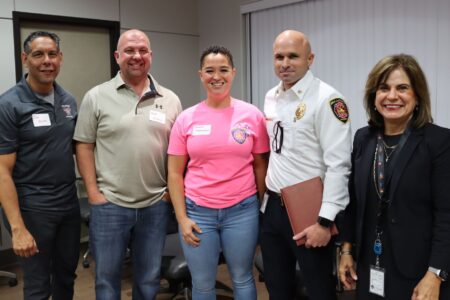
Share On Social!
Many health disparities exist for the Latino community. Obesity, heart disease, diabetes, and certain types of cancer are more prevalent among Latinos than in any other racial or ethnic minority group. Barriers (social, cultural, and financial) also exist that keep Latinos from obtaining preventative health services.
One barrier that is rapidly becoming a problem in California (38.18% Latino population) is the disturbing lack of Latino healthcare professionals. One program is looking to change that. The University of California – Davis has partnered with the Permanente Medical Group to create the Prep Médico program, which offers health courses, lectures, and shadowing opportunities to low-income freshman and sophomore students from Central and Northern California who can demonstrate a commitment to serving Latino patients.
Nearly 70% of all Latino adults in California are overweight or obese; this puts them at higher risk for diabetes, hypertension, cardiovascular disease, stroke and some cancers. Latino doctors have historically been underrepesented in the state’s healthcare workforce.
In order to reduce health disparities, it is critical to address inequities in programs, practices, and policies. Join our site, connect with others, and get involved.
This problem highlighted last fall in a report from the Latino Physicians of California, which advocates for better college preparatory programs for young Latino students. They also call for more financial assistance for medical school hopefuls in an effort to achieve a healthier ratio of Latino physicians to Latino patients.
Just 6% of all the doctors in the state of California identify themselves as “Latino.” In every county in the state, Latino doctors have been found to be underrepresented in comparison to the Latino population of the area, according to a Sacramento Bee analysis of data from the California Medical Board.
According to additional research by the Latino Physicians of California, nearly 29% of all Californians speak Spanish at home; however, less than 20% of the state’s physicians speak the language.
“These dire situations require thinking out of the box,” said Sergio Aguilar-Gaxiola, director of the University of California – Davis’ Center for Reducing Health Disparities in an interview. “What is critically important from a health perspective is to provide health services that are comprehensive and that are adequate. That’s not happening with some population groups.”
Research has found that patients are more likely to follow their doctor’s recommendations when they better understand the language. They are also found to be less hesitant to share personal information with their doctor when they feel they can trust them.
“If a patient knew I was Latino and I spoke to them in their language, they may share with me something they may not share with someone who doesn’t understand the cultures and beliefs of the Latino population,” Acosta said. “Racial and ethnic minorities think of illness through a cultural narrative.”
Read more this story here.
Read stories similar to this one:
- What does it cost to raise a child? A new report gives the answer. #SaludAmerica #HealthEquity salud.to/2jECTth
- Despite promising national trends, poverty is rising in SD County. #SaludAmerica #HealthEquity salud.to/2iK7pof
By The Numbers
25.1
percent
of Latinos remain without health insurance coverage



